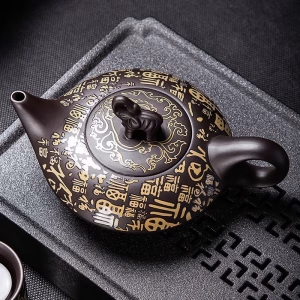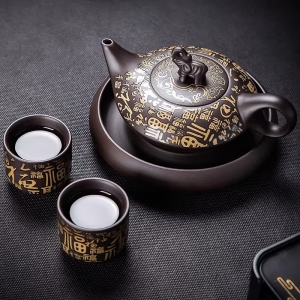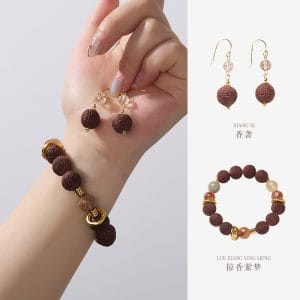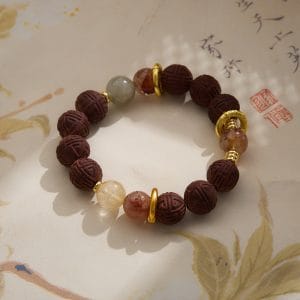A Journey Through Tradition, Symbolism, and Soul
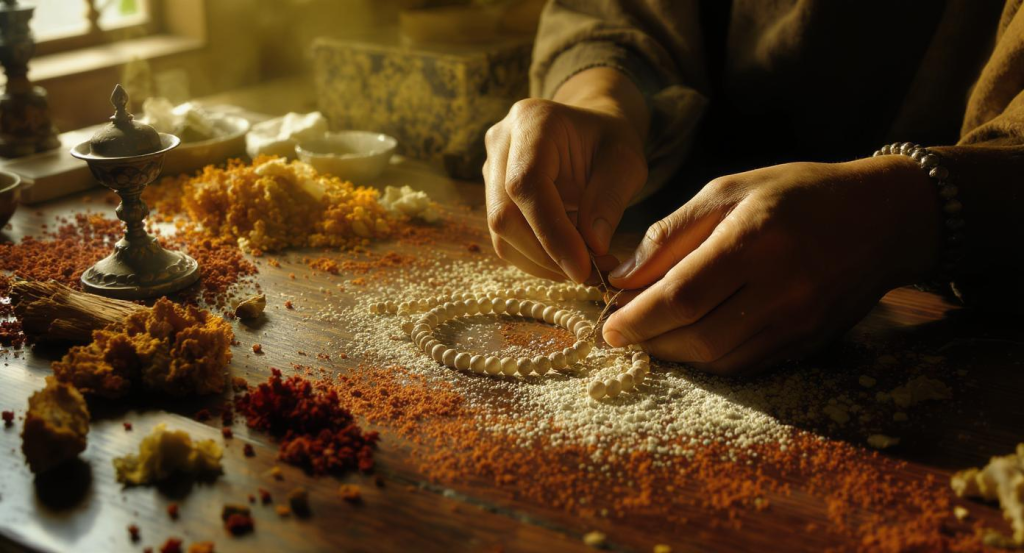
Introduction: More Than Just Adornment
Beads are among the oldest forms of human expression — worn, counted, gifted, and held for millennia. But in Chinese culture, beads aren’t merely decorative. They are vessels of spiritual meaning, tools for mindfulness, and anchors for centuries-old rituals.
From Buddhist prayer beads to aromatic incense bracelets, each strand tells a story — of belief, healing, and intention.
1. A Brief History: Beads Across Dynasties
Chinese bead traditions date back to Neolithic times, when jade and bone beads were buried with the dead as symbols of status and passage to the afterlife.
During the Tang and Song dynasties, incense-infused beads and Buddhist prayer malas became widely used, blending foreign influence (like Indian Buddhism) with Chinese cosmology.
In ancient times, beads were believed to bridge the physical and spiritual worlds.
2. The Symbolism Behind Materials
In Chinese culture, the material of each bead matters deeply. It reflects intention, season, and even personality.
- Agarwood (沉香): Used in incense beads for its calming energy and sacred association with temples.
- Jade (玉): Represents purity, protection, and moral integrity.
- Sandalwood (檀香木): A scentful wood used for meditation, focus, and warmth.
- Red Coral or Cinnabar (朱砂): Symbolizes vitality and bloodline, often linked to Taoist healing.
These materials aren’t chosen for fashion — they are selected for their energetic properties.
3. Counting Beads: The Mala and Mindfulness
Much like Tibetan malas, Chinese prayer bead strands are usually in multiples of 18, 27, or 108, used for:
- Reciting sutras
- Regulating breathing
- Grounding during meditation
Beads create rhythm. Their repetition forms a moving meditation, a quiet companionship for monks, healers, and spiritual seekers.
“Every bead is a breath, every breath is a return.”
4. Beads as Heirlooms and Talismans
In many Chinese families, beads are passed down across generations, believed to retain the energy and prayers of their former owners. Others are worn as:
- Protection charms
- Fertility symbols
- Luck tokens
A bead bracelet from a grandmother is not just a gift — it’s a living history, imbued with warmth, care, and spiritual memory.
5. Modern Revival: Handmade Beads with Ancient Roots
Today, younger generations are rediscovering the beauty of natural handmade beads, especially incense-infused bracelets crafted from traditional Chinese herbs and wood.
Why this matters:
- They connect us with slowness in a fast world.
- Their fragrance offers natural aromatherapy.
- They allow wearers to carry centuries of wisdom on their wrist.
Brands like HandMyth are leading this movement — blending traditional materials with modern aesthetics, reminding us that culture isn’t in museums — it’s on our skin.
Conclusion: Wearing a Philosophy
To wear beads in Chinese culture is to wear a philosophy — one that values nature, breath, memory, and intention.
Whether used in meditation or worn as a quiet blessing, each bead reflects a journey — a step closer to spiritual awareness and cultural identity.
✨ Ready to Begin Your Bead Journey?
Our incense bracelets are more than accessories — they’re handmade stories, crafted with purpose, and infused with healing botanicals.
👉 Explore Artisan Bead Jewelry →
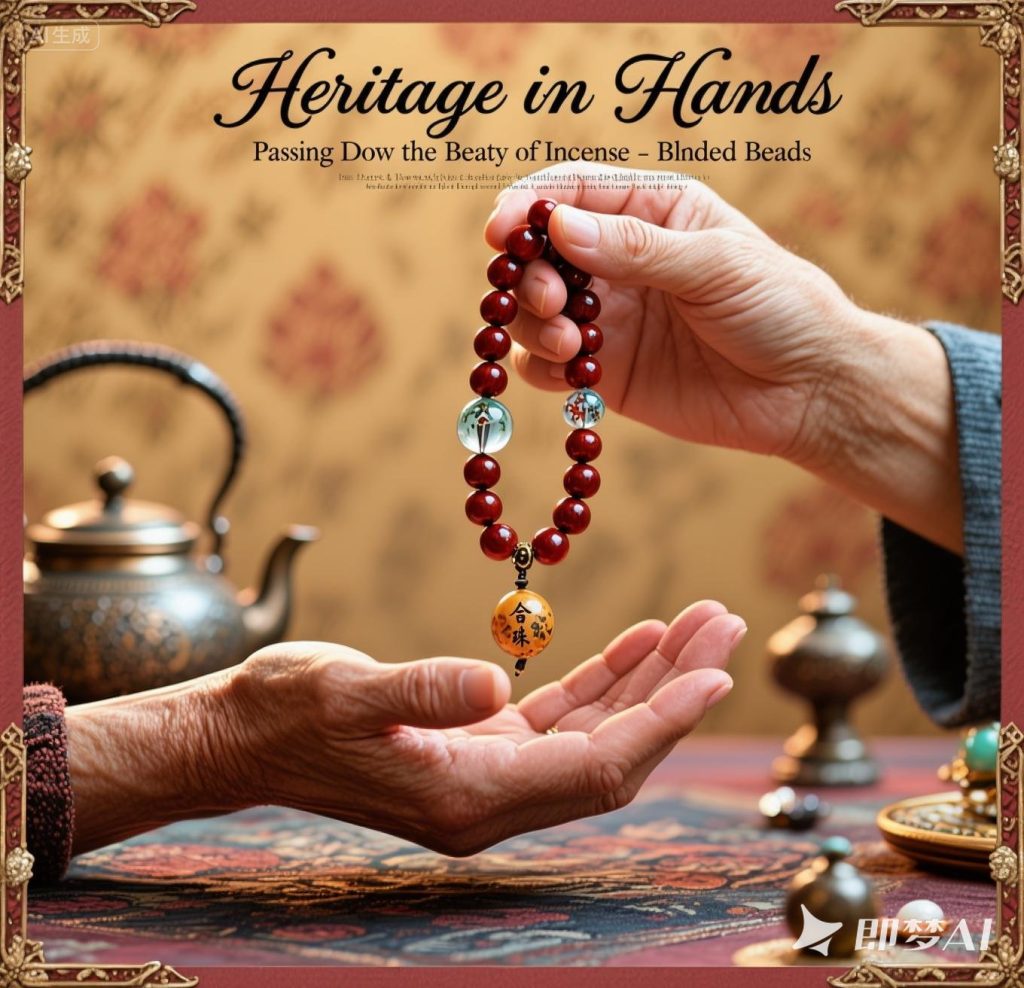
You may also like
Ancient Craftsmanship & ICH Herbal Beads Bracelet with Yellow Citrine & Silver Filigree Cloud-Patterned Luck-Boosting Beads
Original price was: $128.00.$89.00Current price is: $89.00. Add to cartHandwoven Zhuang Brocade Tote Bag – Large-Capacity Boho Shoulder Bag
Original price was: $178.00.$154.00Current price is: $154.00. Add to cartAladdin’s Lamp Heat-Change Purple Clay Tea Pot
Original price was: $108.00.$78.00Current price is: $78.00. Add to cartAncient Craft Herbal Scented Bead Bracelet with Gold Rutile Quartz, Paired with Sterling Silver (925) Hook Earrings
Original price was: $322.00.$198.00Current price is: $198.00. Add to cartThe Palace Museum Paper-Cut Light Art Fridge Magnets: Chinese Cultural Style Creative Gift Series
Price range: $27.00 through $36.00 Select options This product has multiple variants. The options may be chosen on the product pageBambooSoundBoost Portable Amplifier
Original price was: $96.00.$66.00Current price is: $66.00. Add to cart





